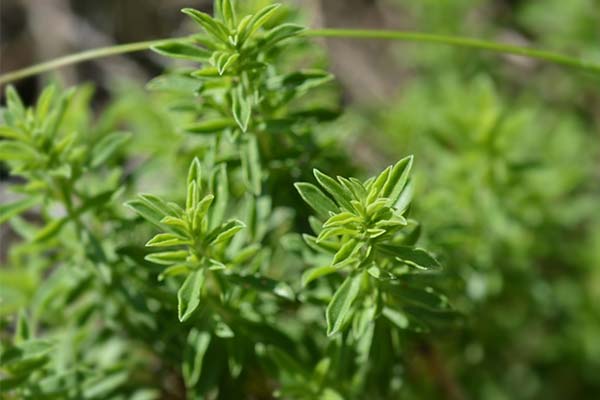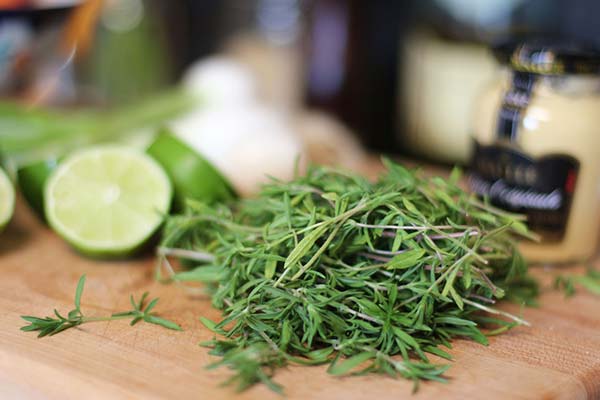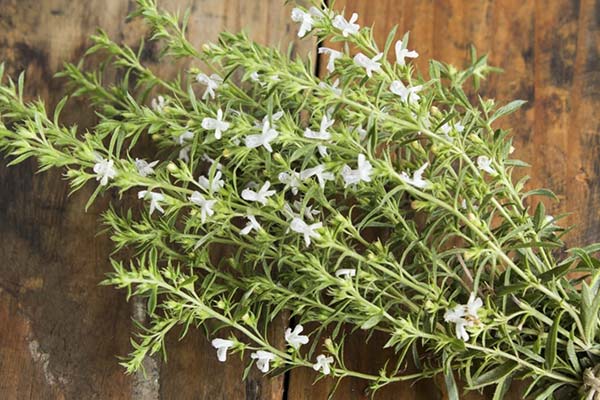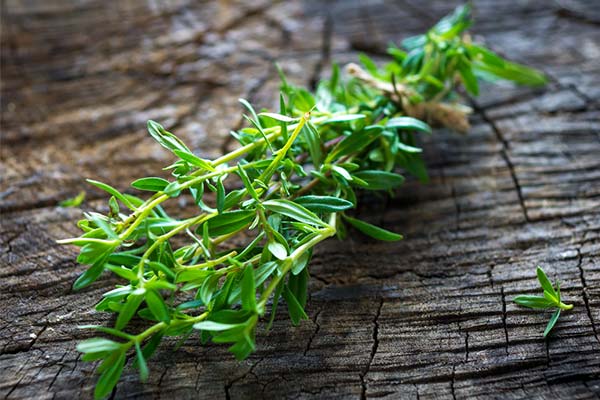- December 18, 2021
- Pourya Jameyi
Whenever the word “mystery” is mentioned, most of them probably think of the delicious taste first. They do not know that there is actually a plant known as savory! Savory herb plant gives a distinctive and peppery taste to various foods (especially meat recipes).
In this article on Sepcotrading, we will share everything you need to know about savory; What it is, where it comes from, where it is used for, what are its two main types and, what are its benefits. We will also inform you about its health benefits, how it is used in cooking, and which foods it tastes good for.
Share:
What is savory?
Savory is a small, green plant that belongs to the mint family that is used to flavor food. Herbs, like savory, are the leafy parts of plants that are used to flavor a variety of foods.
It is a small plant with green leaves and flowering flowers. While this plant is native to the Mediterranean region, it is also found elsewhere, such as in Great Britain.
In this way, it has been used to add flavor to foods of countless cultures.
There are two kinds of savory; Winter savory and summer savory.
While summer savory is more commonly used than winter savory, both have thyme, marjoram, and mint flavors, which can be a great addition to a variety of foods, both hot and cold.
- Summer savory. Satureja hortensis is a sweet, pungent plant that tastes lighter than winter savory. Delicate summer savory plant with small, bright green leaves. This is one of the most popular plants in Acadia, an area along the Atlantic coast of Canada that is used in traditional cuisine and holiday cuisine.
- Winter savory. The aroma of winter savory, Satureja montana, is reminiscent of winter, with hints of sage and pine. It is a hardy plant that grows in Mediterranean rock outcrops (hence the name “Montana” meaning “mountain”).

What is savory used for?
Using savory in cooking can sometimes be a bit challenging because, in addition to using Provencal herbs, there are not many recipes that are usually needed.
However, Savory helps make it a little easier by living up to its name. You can honestly use it in any tasty food and expect really good results.
You only need to be aware of the fact that savory, just like rosemary, can be surprisingly powerful if you overuse it.
It is best to treat this plant as a final touch in various recipes, especially if you plan to cook them for a long time.
If you do not want to grow it yourself, dried savory is stored in those handmade plant jars for months or even years as long as you keep them away from moisture. This allows you to spray it a little whenever you need it.
Savory taste and smell
The pleasant aroma of savory has made it a staple food throughout Europe and essential oil. Summer savory has a spicy and peppery taste, while winter savory is more earthy and calmer. Both have marjoram, thyme, and mint scents. This plant was popular until it introduced the spice route from Asia to Europe.
While both summer savory and winter savory are related, there are subtle differences in taste that give each of them its own unique use.
Starting with the most popular, the taste and aroma of Summer Savory are closer to the mild grass of rosemary and thyme.
It is both sweet and spicy and has a gentle style that reminds you of delicate dishes cooked by expert chefs. It is usually a combination of sausages, sausages, and traditional Bulgarian food.
Meanwhile, savory winter is a little harsher and more bitter. It has a very “winter” flavor, with the familiar sprigs of pine and sage, as well as a bit of the spiciness you might expect in winter food. It is commonly used in meat and bean dishes and is especially well used in undercooked foods such as chicken or fish.
Unlike summer savory, winter savory does not cook well for long periods of time, because the finer phenols and their flavoring compounds decompose during cooking for a long time.
Winter safflower is actually used more as an attractive border plant for vegetable gardens. Its bitter yet pleasant scent greets you as you cross it, while its white flowers are an attractive way to help separate the different beds in your garden.

Savory food(Using savory in cooking)
Depending on the food, dried savory or fresh savory leaves can be used to complete a course. Their plants are on the smaller side, which makes them easy to grow in the garden when they are in full sun.
Here are four ways to use savory in cooking:
- Salt substitute
- Flavoring the meats with a savory rub
- Bottled in vinegar
- Herbes de Provence
From casseroles to meat, bean dishes to stews, savory can add a rich, smoky flavor to many different meals. While summer savory is often paired with lighter foods such as beans and winter savory with heavier foods such as meat and condiments, both can deepen and enrich the flavors of many foods. Here are four savory food examples:
1. Savory meatballs
In a bowl, combine one pound of minced meat and one pound of pork sausage. Sprinkle Italian-style breadcrumbs, salt, pepper, and savory, and mash together to mix well. Roll into one-inch dumplings and place them on a baking sheet. Cook for 20 minutes, then pour into a saucepan of Italian sauce (tomato-basil or marinara) and let the meatballs cook in the boiling sauce. Serve on pasta.
2. Stuffing
The hearty taste of winter savory leaves goes well with comfortable warm foods such as condiments. Heat half a stick of butter in a pan. Add savory, thyme, and rosemary generously to flavor the melted butter. Add onion, celery, fennel, and mushrooms and fry until soft. Stir in 3 cups of chicken stock and bring to a boil. In a bowl, mix the breadcrumbs with the two eggs and mix them together. Add vegetable juice to breadcrumbs. Mix well and put in a pan and cook for an hour.
3. Savory green beas
Boil the chopped green beans for five minutes. Heat the butter in a pan. As it melts, add half a teaspoon of savory, green beans and a teaspoon of fresh lemon juice. Cook until the beans are soft.
In a bowl, combine one pound of minced meat and one pound of pork sausage. Sprinkle Italian-style breadcrumbs, salt, pepper, and savory, and mash together to mix well. Roll into one-inch dumplings and place them on a baking sheet. Cook for 20 minutes, then pour into a saucepan of Italian sauce (tomato-basil or marinara) and let the meatballs cook in the boiling sauce. Serve on pasta.
4. Savory lentils
Use winter or summer savory in this classic and easy lentil dish. Fry onion and garlic in butter. In another pot, boil vegetable or chicken broth. Add uncooked lentils, savory, salt, pepper, carrots, tomatoes, and a mixture of garlic and onion. Boil for about 45 minutes until the lentils are soft.

Savory herb Benefits
Savory is the main herb beside marjoram, rosemary, thyme, and oregano. Let’s take a look at some of the benefits of savory herbs.
Savory has numerous properties such as improving gastrointestinal function, preventing cancer, strengthening the immune system, and reducing the risk of cardiovascular disease. Some of its most important benefits are:
Savory herb and improving the digestive system
The fiber in savory helps improve digestion and is very good for stomach aches. This plant is significant because it has strong anti-inflammatory properties that can reduce stomach ulcers. In addition, it is a savory of probiotics that promotes the growth of beneficial bacteria in the gut, thereby helping to improve the health of the device. This plant is also recommended for the treatment of nausea and medical diseases due to its warm nature.
Preventing cancer by consuming the savory herb
It is a savory of antioxidant compounds such as vitamin C and polyphenolic flavonoids that eliminate the damage caused by free radicals in the body. Free radicals are the main cause of cancer such as colon cancer, prostate cancer, and …. Therefore, savory consumption reduces the risk of cancer.
Savory herb and strengthening the immune system
Savory has a lot of vitamins and vitamin C that help improve the immune system. These vitamins have antioxidant properties, release free radicals and prevent the formation of healthy cells. Vitamin C in this plant increases white blood cells. Therefore, it strengthens the immune system. The results of many studies have shown that consumption of safflower can reduce the risk of various diseases such as colds, fever, coughs, and flu.
Reducing the consumption of heart diseases by consuming the savory herb
The presence of minerals such as potassium, magnesium, copper, and manganese in savory reduces the risk of heart diseases such as heart attack and stroke. The results of many studies have shown that boundaries can reduce the amount of bad cholesterol in the body and increase the amount of good cholesterol. High cholesterol is the main cause of this disease. In addition, savory can reduce high blood pressure due to its high potassium content. Therefore, by consuming this plant, the risks of high blood pressure are also found.
Savory import and savory export
We in Sepcotrading offer savory export and savory import services. You can contact us right and check the savory price and place your order.






